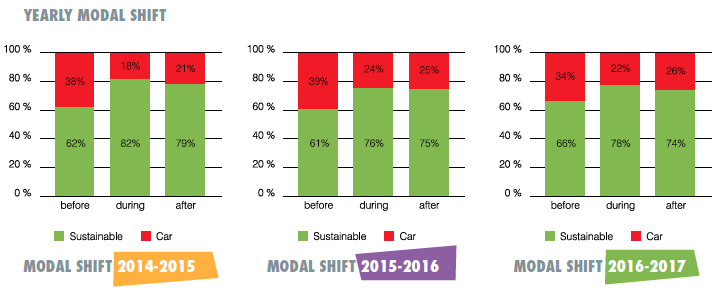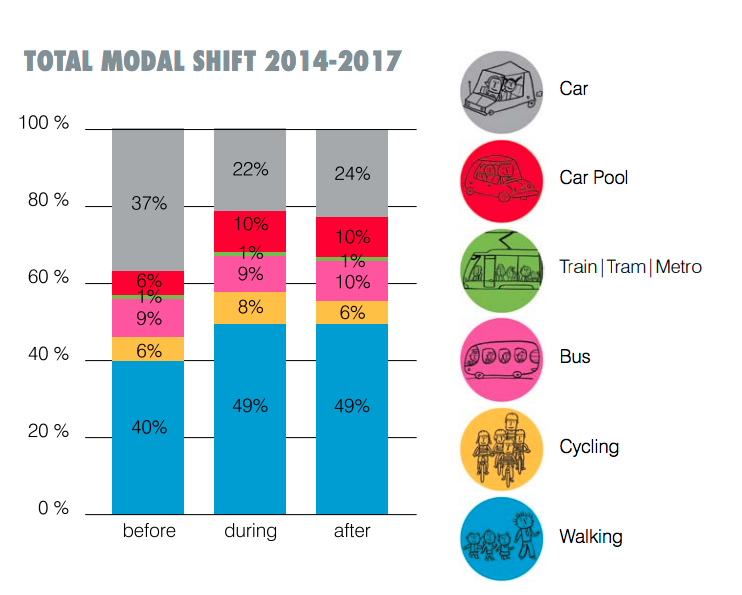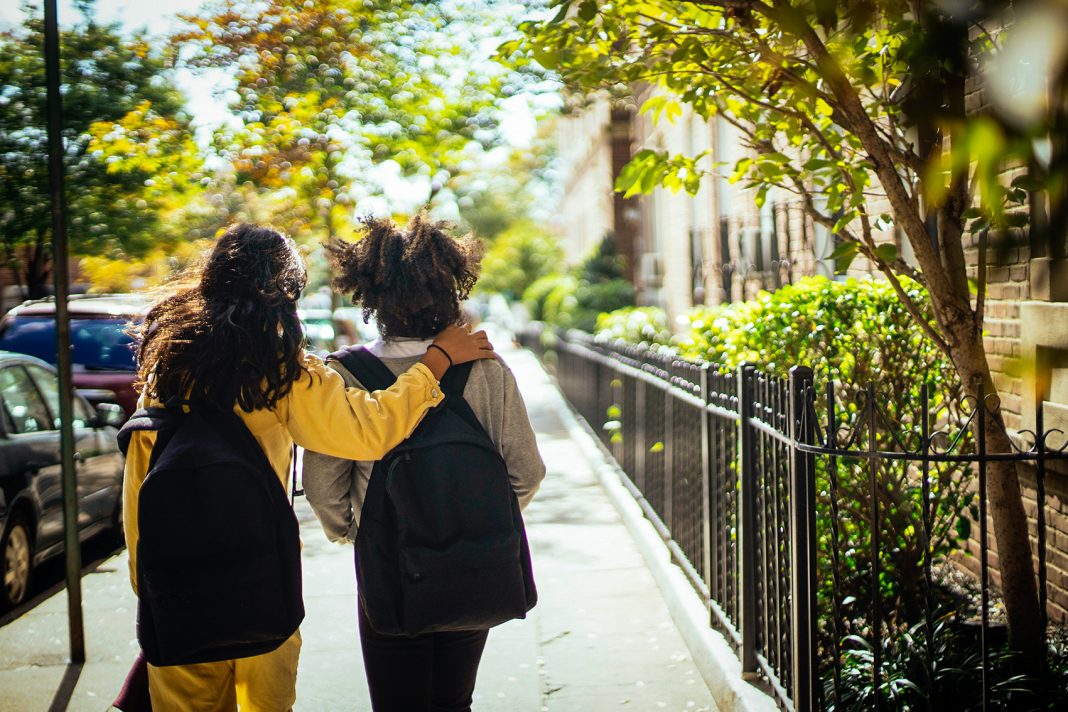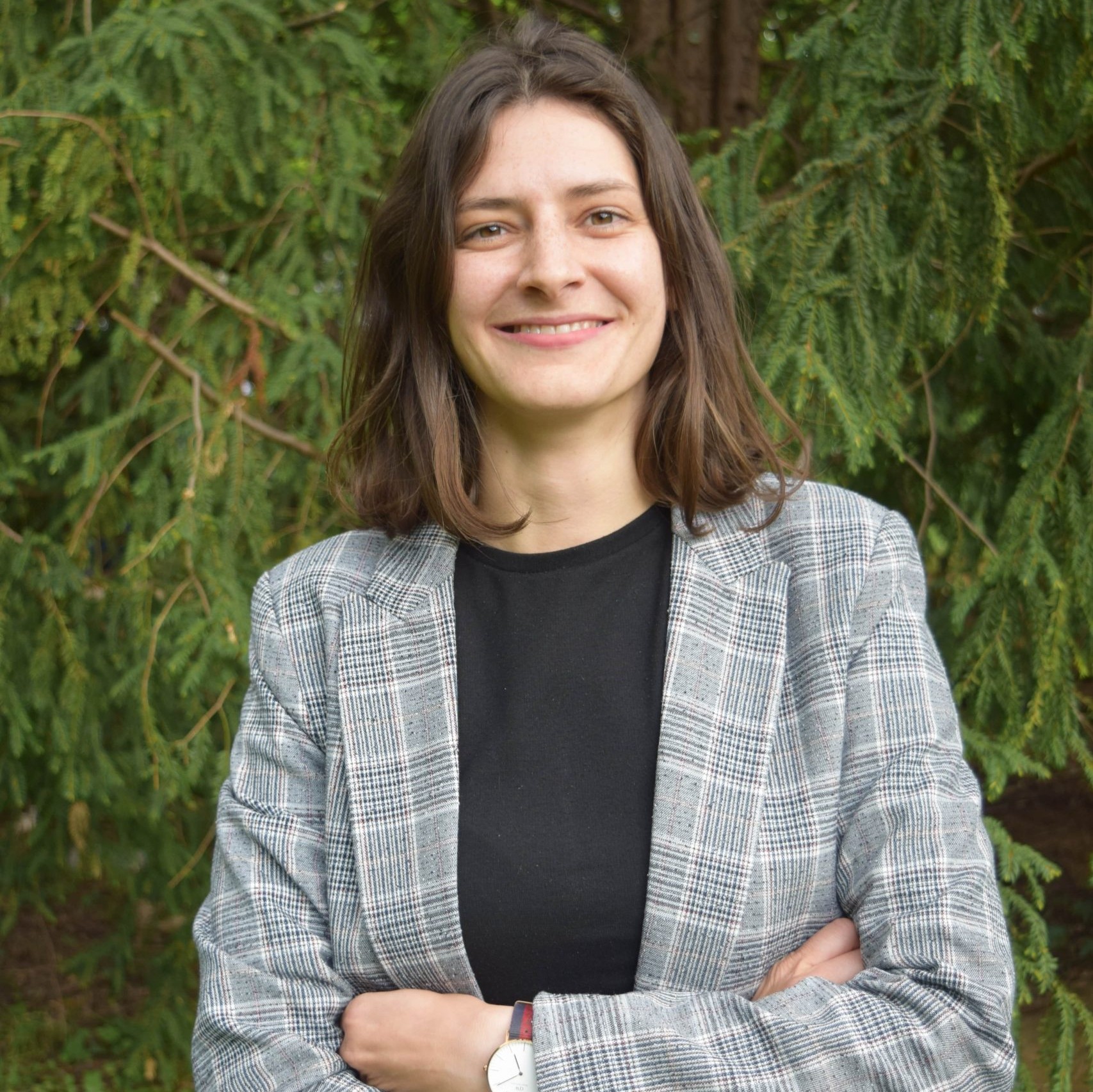How to implement changes in a fun and exciting way? How to influence the youngest residents of your city to switch to sustainable means of transport? Well, through gaming, obviously! Specifically, with a game called Traffic Snake Game Network.
What Exactly Is the Traffic Snake Game Network?
The Traffic Snake Game Network (or TSG) is a campaign that originated approx. 15 years ago, when it was established by Mobiel 21 in Belgium. Over the years, this project has expanded and evolved, especially with the help of EU funding. TSG as an EU project took place between 2014 and 2017, by which time it had reached 19 countries: Austria, Belgium, Bulgaria, Czech Republic, Denmark, France, Germany, Greece, Hungary, Italy, Lithuania, Malta, Netherlands, Portugal, Romania, Slovakia, Slovenia, Spain and the UK.
The aim of this project has always been to encourage walking and cycling to school, with the main focus being on primary school children, parents and teachers. TSG is used as a tool for changing the behaviour of primary school children (ages 4-12). Overall, the project is promoting sustainable transport modes and a less car-dependent lifestyle.
The project recognizes the importance of including children, they are the generation that is confronted the most with the consequences of our way of living, of how we deal with our planet. “Children are the core of a lot of changes, in order to live more sustainably,” Els points out.
What Started as an EU Project Evolved Into Something Much Bigger
Since September 2017, TSG is no longer an EU project but an independent co-operation based on a TSG Network membership. So far, eight organisations from seven countries have joined and will continue with the campaign:
- Mobiel 21 and Empreintes (Belgium)
- Euromobility (Italy)
- ACA-M (Portugal)
- OER (Romania)
- Gea 21 (Spain)
- DTV Consultants (The Netherlands)
About the Game: How It Works
For a better understanding of how the game works, you can watch this insightful short clip:
1. TIME PERIOD
TSG takes place two weeks in a school year. The specific time is decided by the school.
2. POINTS & DOTS
During this time, children put dots on a snake’s body – either on a physical banner or a digital platform – every time they walk, cycle, use public transport or carpool to school. The goal is to fill the snake with dots by the end of the two weeks – schools set their own realistic final goal.
3. VISUALISATION
Each day, the progress is monitored and realised in a gamification scoring concept with a cityscape header – the more sustainable trips there are, the cleaner the ‘city’ gets:

4. TRACKING WITH TRACE
TSG worked in collaboration with another EU project, called TRACE, which provided tracking services via their own developed app for tracking cycling and walking.
How exactly does the tracking work?
5. REWARDS
Children receive a reward when they reach key points on the banner (e.g. no homework) and an even bigger one when they reach the head of the snake (something the school can organise, e.g. a new bicycle shed).
6. ANALYSIS
Three weeks after the game has been played, all data from before, during and after the campaign is collected and analysed.
7. APPEAL FACTOR
TSG states the game is appealing to children as it represents a friendly competition with other classes. Through this innocent competitiveness, they are encouraged even more to actively participate in sustainable travel to and from school.
“The game is fun, effective and easy to implement.”
– TSG Network
The Outcome of the Project
The initial goal of the EU project (over the three years) was to reach at least 3 European cities and at least 60 active schools, realising at least a 15% increase of sustainable trips (during the campaign).
During this time, TSG was played in 19 countries, specifically in 507 cities, in 1,192 schools and among 177,587 students. Sustainable trips throughout these three years have increased – during the campaign, the percentage of sustainable trips rose to 78%, and this produced a 15% increase. The overall goal of the project was not only achieved but surpassed.
You can see the numbers and their increase in these charts:

As you can see, the biggest change was achieved with the reduction of driving to school (in private cars) by 13% and an increase in walking by 9%. Other means of travel (carpooling, cycling, train and bus transportation) have either pretty much stayed the same or had a slight increase within 1 or 2%:

The campaign, however, not only increases sustainable ways of transport but simultaneously reduces CO2. In fact, as of now, the game has helped reduce 916 tons of CO2 – this number can be tracked regularly on TSG’s website.
One of the unique features of TFG is that it not only focuses on changing students’ behaviours but it also encourages their parents and teachers. Teachers, for example, also participate in contributing to the overall end result, and extra stickers are provided for this exact reason. The creators of the game credit the participation of teachers and principals as one of the reasons for the game’s success. The enthusiasm from a person, with students relying on and copying their behaviour, is a much-needed element.
“We start with one week – we challenge the kids and their parents to start travelling to school in another way. And it’s this small challenge that can mean a lot.“
Fun Facts About TSG
- TSG won the Sustainable Energy Europe Award in 2009
- Bulgaria had the biggest increase of sustainable modes during the game – 21%
- Romania reached the most students in the periods from 2014 to 2016 (33,218 pupils)
- Greece had the biggest outreach to its cities between 2014 and 2016: 108 municipalities
Your Turn – Interested?
If you would like your city or school to participate in TSG, first check here if your country is on the list of existing national focal points (NFPs). NFPs are organisations that promote the project and steer the implementation of the TSG. If your country is listed, contact the representative organisation. If it’s not, you can contact the TSG secretariat through this form.
Traffic Snake Game is a win-win situation: the participating schools are happy to encourage healthy lifestyle and sustainability through a game, and children are happy because they can move. You promote sustainable ways of travelling, and you get the children to actively wake up before arriving at school.
“Schools are key for changing mobility behaviour.“
In a Nutshell
Implementing changes often starts with the youngest generations, which consequently copy behaviours of their parents and role models. Traffic Snake Game is all about implementing sustainable alternatives to everyday car trips to school in a fun and exciting way.
The campaign’s idea not only encourages the young ones to think about helping their cities to fight pollution issues but for parents and adults to get involved, too. After all, it’s all about setting an example: children do as they see, not as they are told.
Besides their website, you can follow up on the TSG campaign on Facebook, Twitter and YouTube. Or read more about the overall project in this summarised TSG’s final report brochure.
If you would like to know more about similar projects, check out our list of EU projects on walkability, cycling and mobility, or read about another inspiring EU project focusing on creating change with the help of children.


